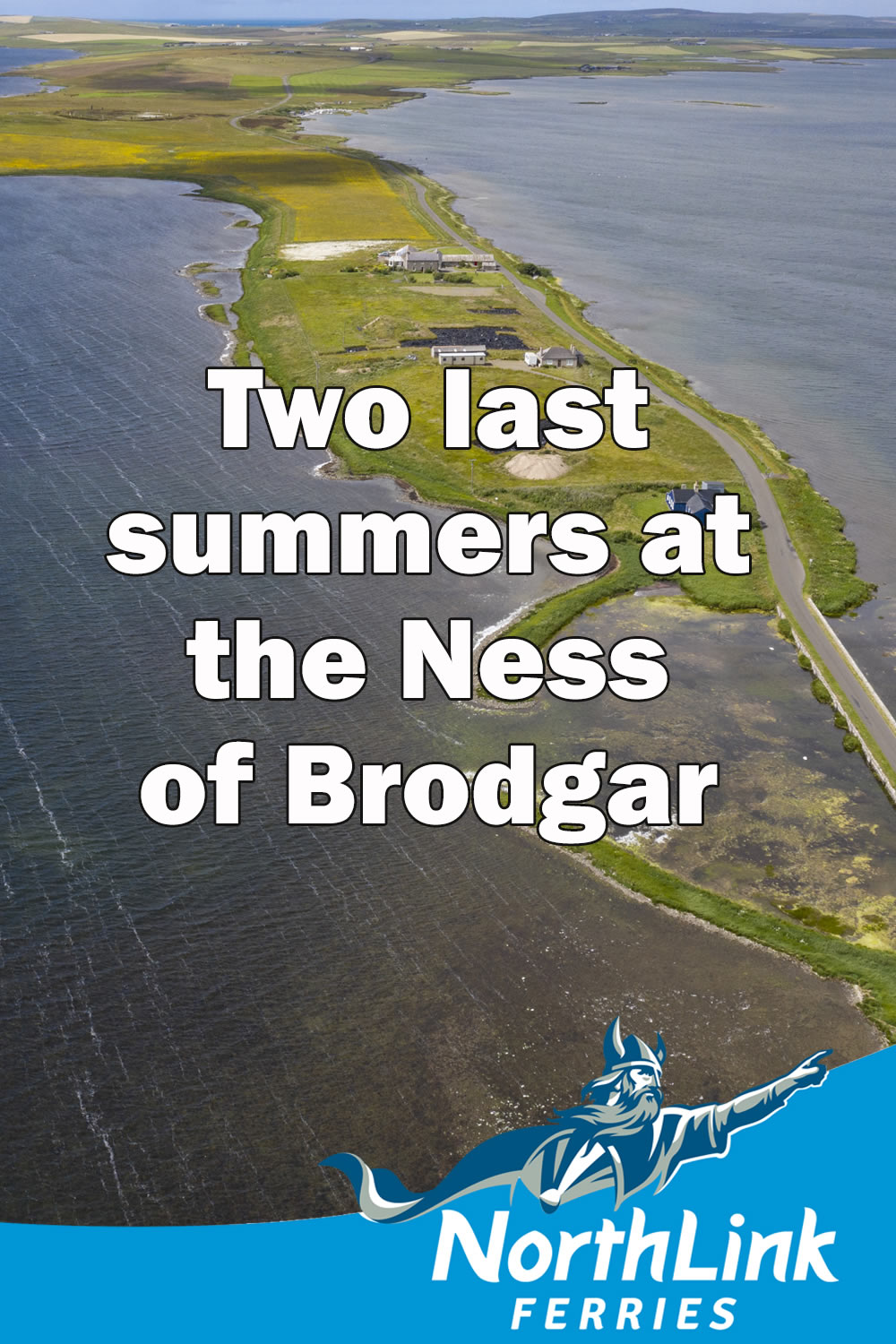Two last summers at the Ness of Brodgar
Each summer in Stenness, on a thin green strip of land between two lochs, archaeologists gather at the Ness of Brodgar to uncover ancient buildings and what lies beneath and around them. For almost two decades they have been trying to puzzle out this complex of beautiful structures, built 5,000 and more years ago.
“We think that it is our responsibility to finish our watch off properly and thoroughly, so that when we close for the last time, it’s going to be straight forward for whoever comes next, to pick up the pieces.”
The Ness of Brodgar is thought to be a place for meeting. The buildings are unlike other Neolithic domestic houses elsewhere in Orkney being very large with complex architecture and containing hundreds of examples of Neolithic art and other amazing artefacts. As the years have rolled on, our understanding of the islanders who once used it, has deepened.
Orkney residents have become quite used to this annual flock of archaeologists and visitors. So it came as a shock to hear that the dig would be ending in 2024. We asked Nick Card and Anne Mitchell from the Ness of Brodgar about what this might mean for the Ness, and how things might be left.
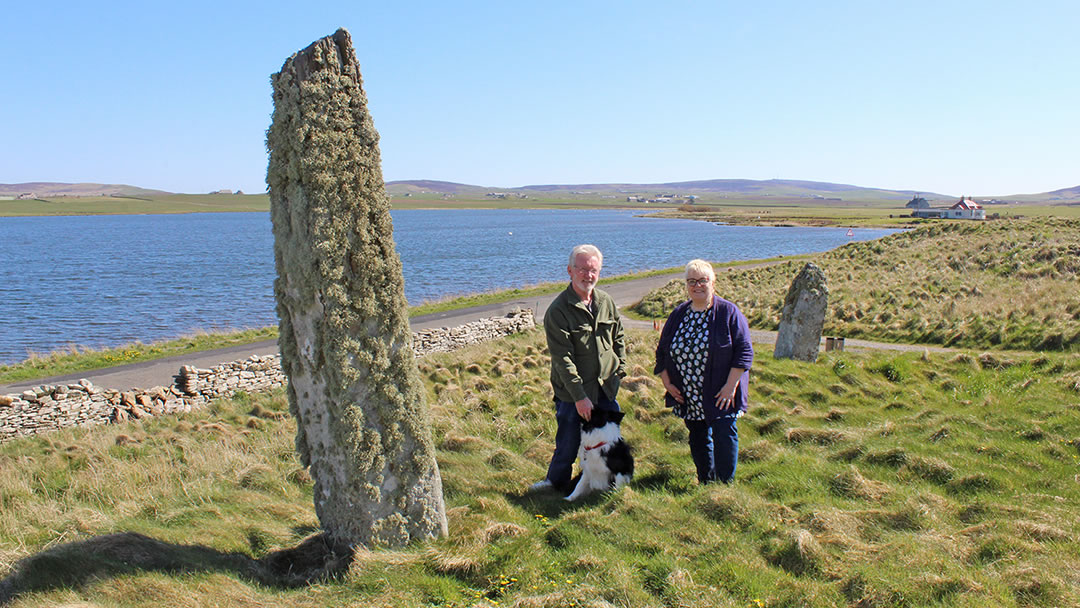
Q. Why have you decided to end the dig at the Ness of Brodgar?
NC: In all the time we’ve been excavating the Ness of Brodgar, we’ve really only unearthed about 10% of it. You could devote 100 years to this huge site and still not excavate it all, by depth or surface area. However, we do have a good understanding of all the major buildings that have been uncovered so far, and the overall story of the Ness.
At the end of the season each year in August, some people think we go on holiday for the next 10 months but it’s not quite like that! What we do then is analyse the material found (which spans the whole of the Neolithic to the start of the Bronze Age – over 1200 years!) and make sense of it. Along with fund raising, writing, and preparing for the next season of excavation etc etc, it’s a non-stop job.
Although we finish excavating in 2024, it will take several years to bring the Ness of Brodgar to a close. Together with the material that must be analysed by a host of specialists, archived and deposited to, we hope, the Orkney Museum but that’s not in our hands, there are also many thousands of written records to be scanned and sent to the National Record of the Historic Environment in Edinburgh where it will be accessible to everyone. Several new volumes on the results of the project will also be produced.
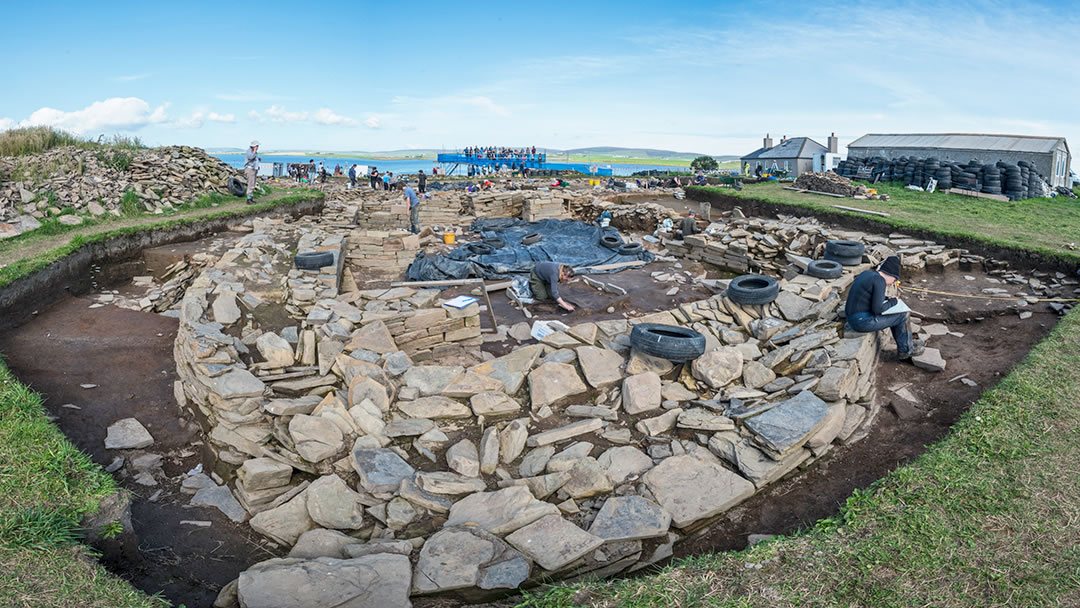
Q. Why is the Ness of Brodgar is not being left open like Skara Brae for visitors?
NC: It would be lovely if we could leave it open, but unlike the beach stone at Skara Brae, the quarried stone at the Ness of Brodgar would very quickly deteriorate. So, we need to cover it over and return it to the green field it was 20 years ago. This will protect the archaeology and that is our main consideration.
There have been suggestions about building a dome over the site. However, anything like that would require foundations which would require more of the archaeology to be excavated, and the cost would just be prohibitive. The best and safest thing to do is cover it and leave the Ness of Brodgar there for future generations to come back to.
We will still have access to the Ness through our website, digital records, 3D reconstructions, books and augmented reality.
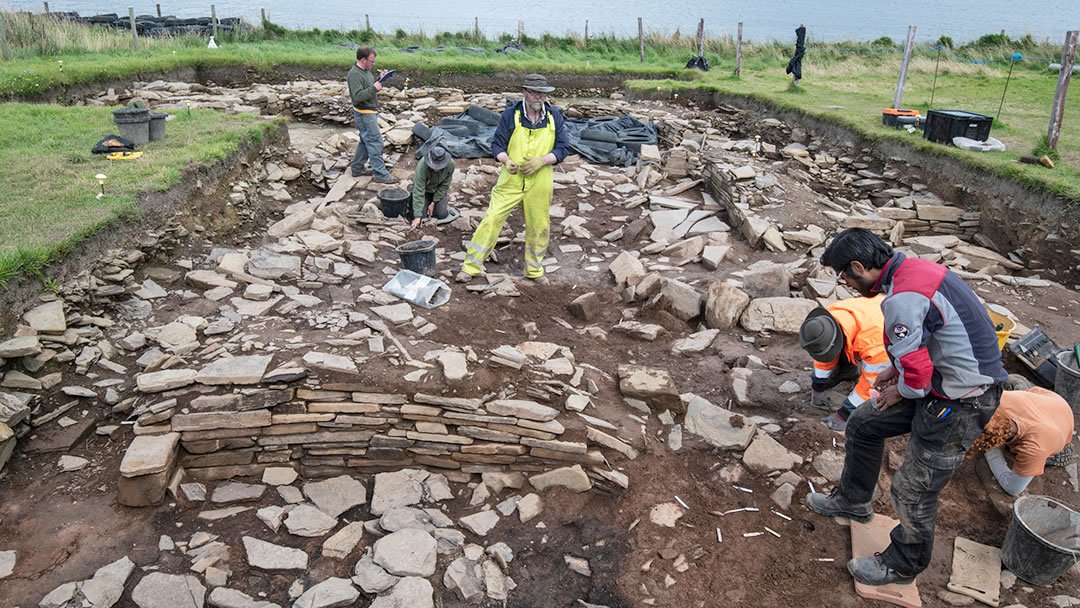
Q. How will we access information about the Ness in the future?
NC: We have a website (www.nessofbrodgar.co.uk) run by Sigurd Towrie packed with information, and in the future will have an archive of all the written and visual records from the dig site. All of the material will be there if someone wants to come back and re-assess or re-interpret or expand on what we have done. Throughout the excavation of the Ness, one of our prime concerns has always been to share what we do, whether that’s on our website, lectures, our newsletter, tours, articles, papers, and social media, and that won’t stop when the excavation finishes.
AM: Post excavation, we’d still like to conduct tours. These would be like the off-season tours we presently offer. It requires a little bit of imagination to bring the site, lying under sheets of plastic, to life. Visitors go away with a sense of what the Ness is all about. In the future, you may be able use augmented reality to see what the Ness of Brodgar looked like both during the excavation and as it was 5,000 years ago.
We think that it is our responsibility to finish our watch off properly and thoroughly, so that when we close for the last time, it’s going to be straight forward for whoever comes next, to pick up the pieces.
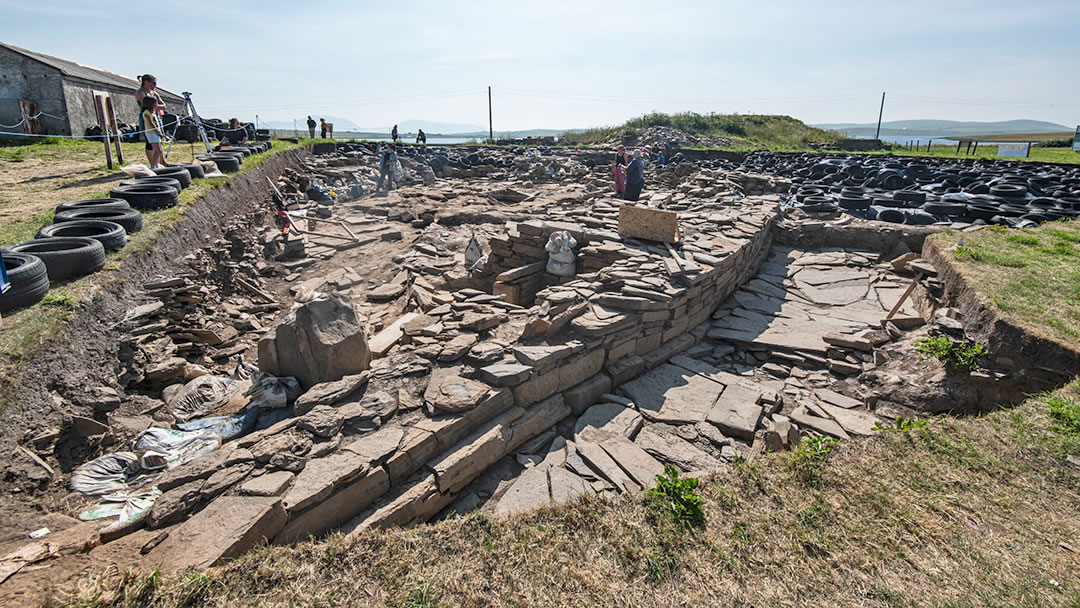
Q. When the dig began, could you have guessed at what might be found?
NC: Not in our wildest dreams. The discoveries we’ve made have led to major eureka moments – the Ness covers the whole of the Orcadian Neolithic, over a thousand years, a huge period of change and development.
If you think about the length of time the Ness was in use, in comparison to modern day history, it is the same time difference between now and the Battle of Hastings in 1066. Society has changed massively and developed over that time and the Neolithic period was no different. It was a dynamic, evolving, changing society and we see a lot of that reflected at the Ness.
AM: Also, the technology we use to investigate our finds in detail at the site has improved dramatically since we started. It is incredible to think about the tools that archaeologists of the future will have at their disposal when they come back and look at the Ness again.
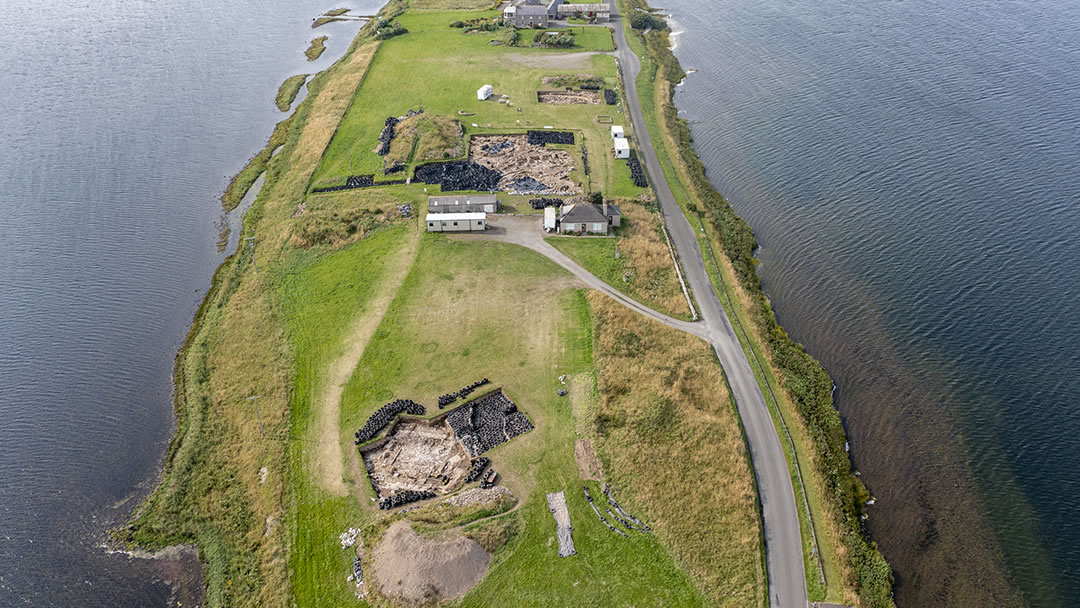
Q. You mentioned that you’ve uncovered about 10% of it – can you guess at what the rest might be?
NC: Well, it’s 10% by area but looking at the volume of the site, it’s probably only 5%. Over the last few years, we have made efforts to extend our knowledge of the immediate surroundings. There is the World Heritage Geophysics programme which covers the whole area from way beyond the Ring of Brodgar right the way down to Maeshowe, and you can really see how much archaeology is there on page 60 of the new guidebook ‘The Ness of Brodgar, Time and Place’, and in the award-winning book, ‘Landscapes Revealed’.
However, the 5% that we have investigated gives a really good insight into what the whole site is about.
AM: It has been quite amazing how each of the trenches has revealed something quite different. But there are still many questions that we want to answer. For instance, we know a little bit about what was happening in the Loch of Stenness and how it had a big impact about what was happening on the isthmus. Yet we don’t fully understand the Loch of Harray at the time.
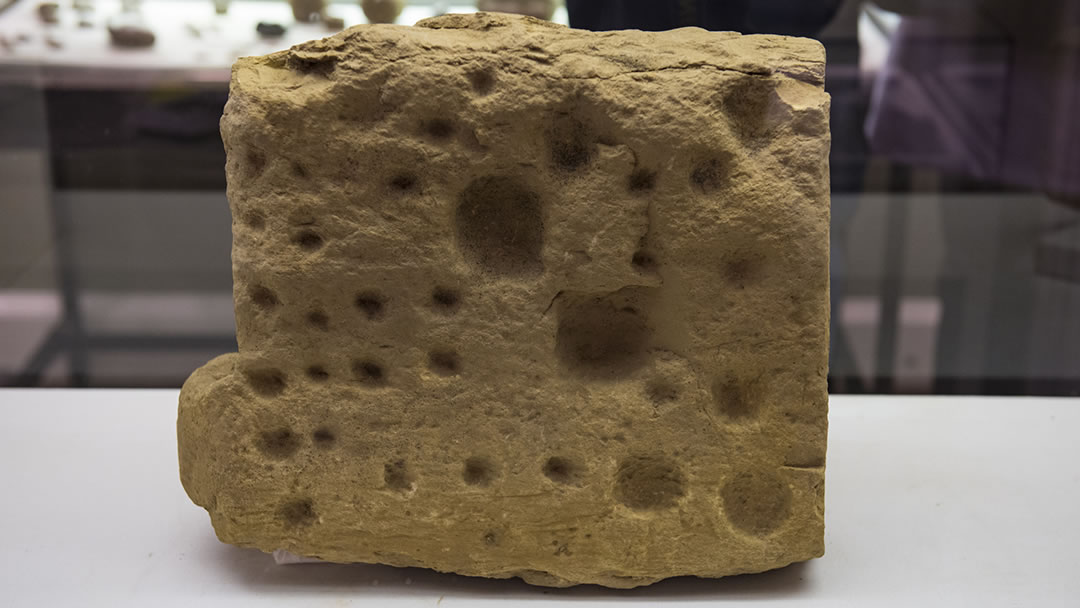
Q. One of the big discoveries at the Ness of Brodgar was art. What insight did that offer into the people at the Ness?
NC: Dr Antonia Thomas of the UHI Archaeology institute is our expert on the art of the Ness and in addition to her thesis written in 2014, she has been looking continually since then at the subject, which has many different interpretations.
There is no easy one-line explanation because the art we have found was being used in many different contexts. Some art was so fine in size you can barely see it, whereas some art stands out much more clearly.
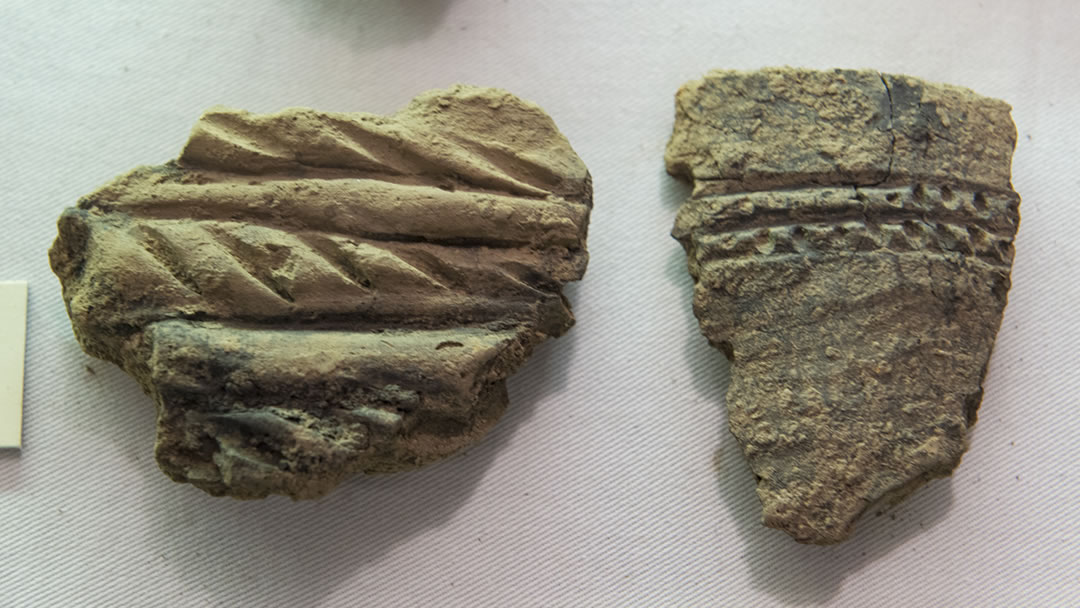
AM: There are different methods used, too – incised, ground and pecked, and some walls painted.
We’ve discovered other interesting aspects of neolithic life. Our pot specialists Roy Towers and Jan Blatchford have uncovered many impressions, not decoration, on the Ness pot and that includes fingerprints. Dr Ken Fowler of the University of Manitoba in Canada, a fingerprint specialist, has looked at some of the Ness prints and finds, so far, that they were made by adolescent and adult men, perhaps a master and apprentice.
Our onsite geologist, Martha Johnson conducted a study for her PhD called ‘Rock Matters: A geological thesis for understanding the rock at the Ness of Brodgar’. Martha initially came to help us sort out bone, but she recognised rock at the Ness that didn’t geologically belong there, and this was significant. The stone had been brought in, deliberately, by people at the Ness, from many places across Orkney.
NC: Not many other digs have an onsite geologist, and we hope Martha’s work will cause other archaeologists to think more about the raw materials, as well as the worked materials on site. We wondered where the rock came from, why was it important, and who brought it there.
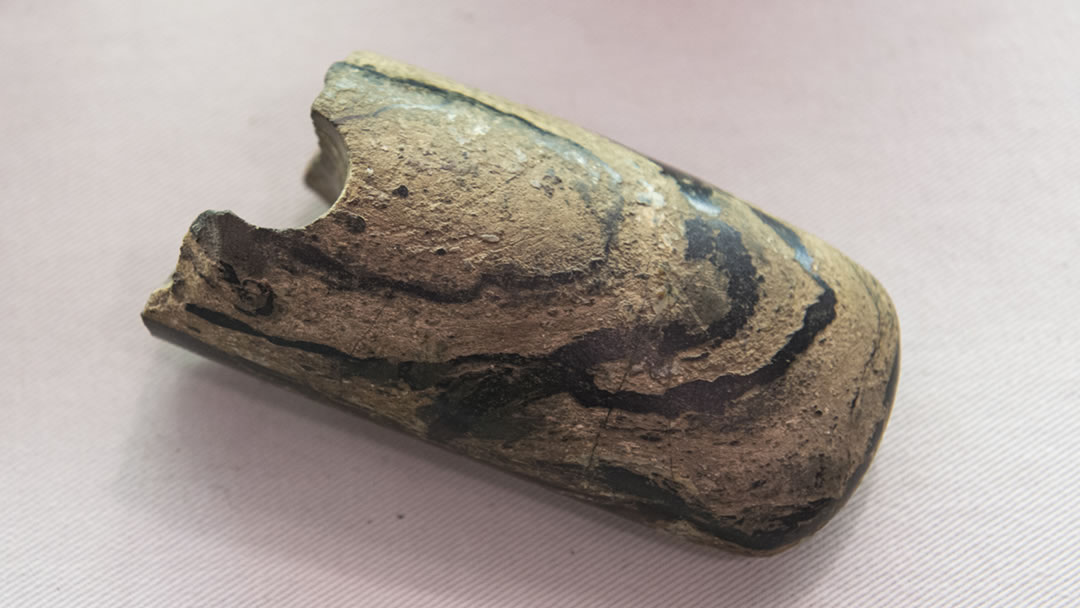
Q. Could the rock have come via an early version of a buy and sell website like Orkney Merkitplace?
AM: Maybe human nature doesn’t change! However, when we first started looking at flint on the site, we thought that it was coming from south, but thanks to Mark Edmonds, Dr Hugo Anderson-Whymark and Ann Clarke we discovered it comes from the east of Orkney.
NC: We’re lucky to have attracted so many experts to the Ness of Brodgar, because they have shown us that the flint at the Ness was prepared in a way which was more common in southern Scotland. By implication this means Orkney was not a set of isolated communities. This coupled with other evidence from the Ness shows there were a lot of connections right across Britain and possibly beyond.
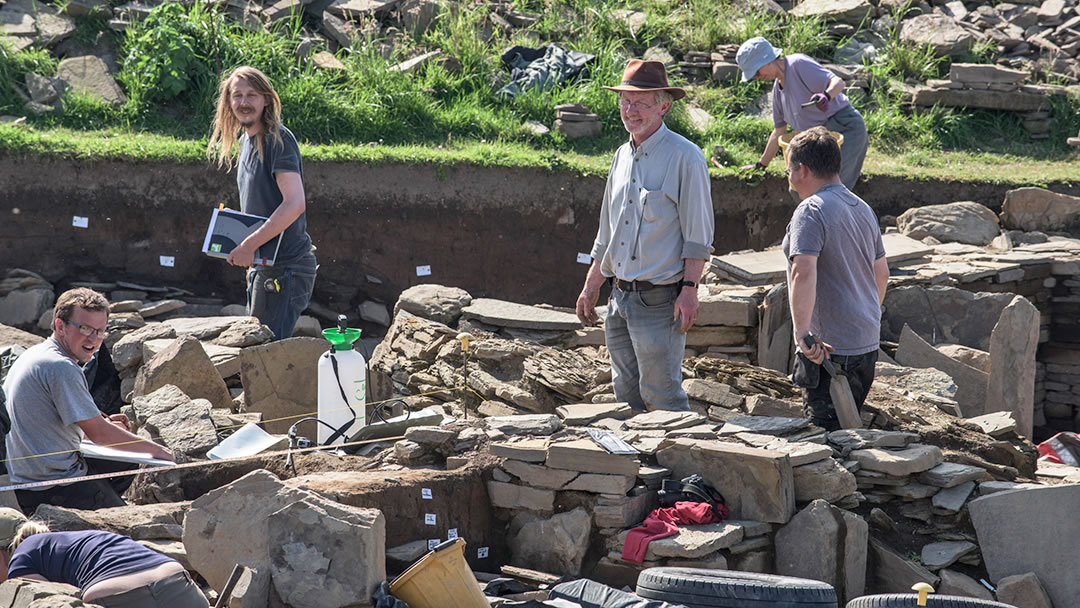
Q. As the years have worn on, have your ideas about the Ness of Brodgar changed?
NC: I think some ideas have changed. The basic story we produced some 10 years ago is still applicable to the Ness but we have continually refined it. Initially we saw it as a continuum over a thousand years, where structures were built, renewed, renovated, knocked down and built again. However, we now see it as much more of an ebb and flow with occasional hiatus’ in activity. This was happening across Neolithic society in general.
Improving the technology that we use on the site has helped. For instance, we can now look at pottery in a different way. We can analyse not just the surface residues on the pot, such as what was cooked in the pots, but we can look at what was absorbed into the fabric of the pot. We can now delve down and extract the DNA from the materials so we can tell what kind of species of animal or plant has been contained in the pot.
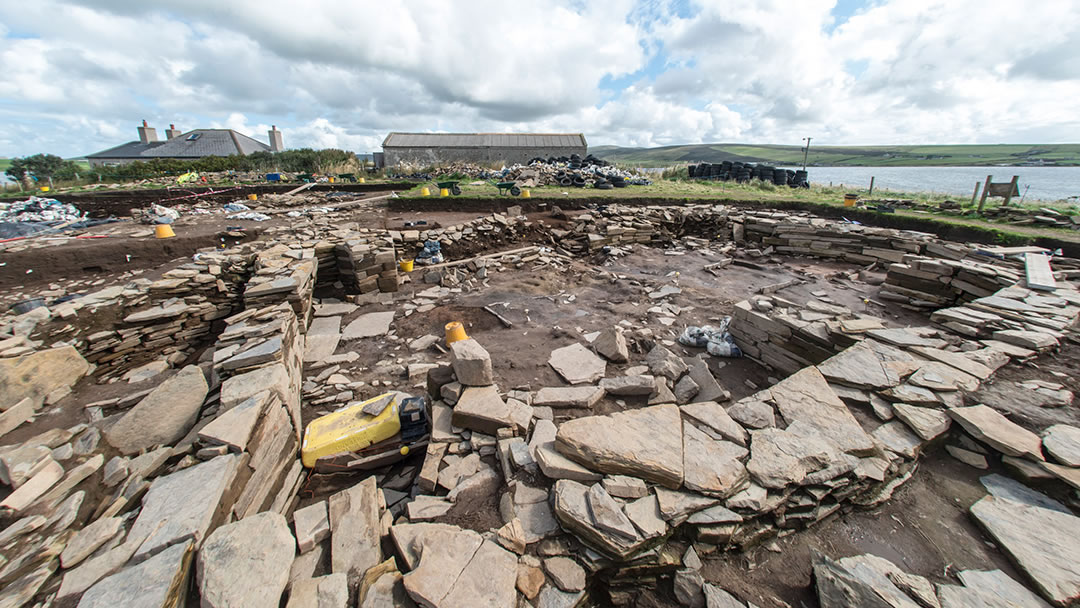
Q. The enclosing walls of the Ness of Brodgar have always fascinated me. Do you have a final answer for why they were in place?
NC: We don’t, no, but it is one of the ideas that has changed. When we discovered the wall at the north end of the site facing Brodgar and the other wall on the south side facing the Stones of Stenness, we looked at the geophysics and found indications that these walls potentially totally enclosed the entire site.
We now think that the Loch of Stenness and the Loch of Harray formed natural boundaries to the site and that there were only two walls.
Whether these two walls were completely contemporary is something we are beginning to have new thoughts about too. The site evolves as we gain more information and look at things in different ways. For instance in 2022, we realised there are the remains of two sets of steps leading up the northern wall, in Trench J, presumably to the top of the wall. Why was that access needed?
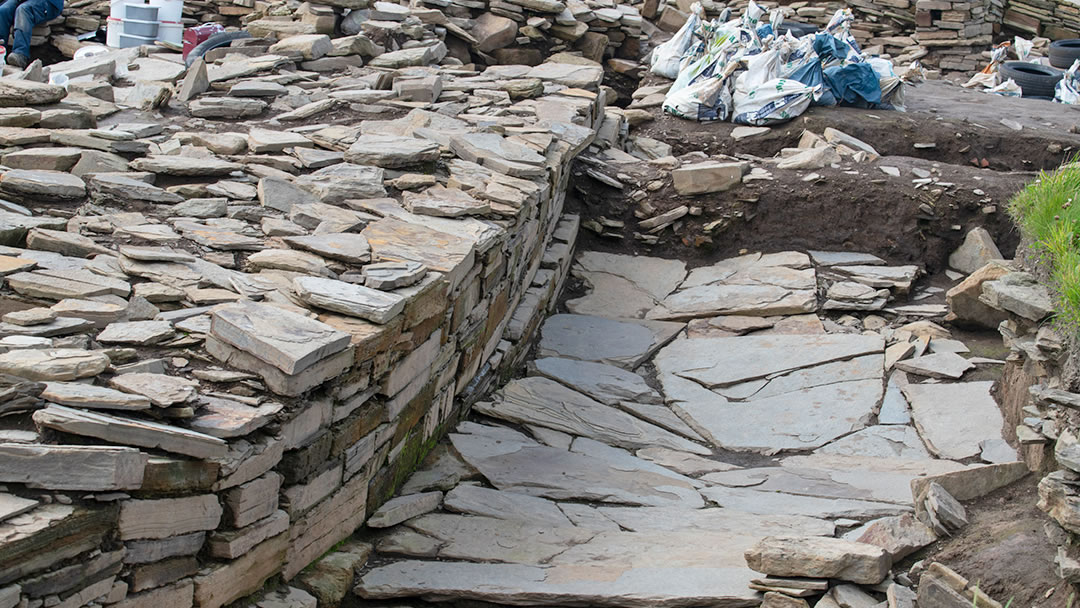
Q. Looking back at the dig, were there any stand-out moments for you whilst you were overseeing the site?
NC: Too many. Literally every day on the site, something will happen which will make your jaw drop. I remember when the carved stone ball was found in structure 10. Or when we suddenly realised that some of the big slabs in Structure 27 were actually parts of 4 to 5m long standing stones that had been laid on edge. The quality of some of the stonework in some of the buildings always makes you draw your breath.
During one of our excavation clubs for kids, I’ll always remember the little boy who found a part of a polished stone mace head. The look of pure joy on his face was absolutely magic. I’m sure that moment will live with him for the rest of his life.
Hearing the reactions of visitors to the site is always great.
AM: The family of volunteers we have built up over the years is amazing too. There are many visitors who come back to meet and chat to the team who work here.
I get a lot of satisfaction looking back at people who have come to the Finds Team and have gone on to get a degree or a PhD. I love that the Ness of Brodgar has been the trigger for someone discovering a passion for archaeology and perhaps rethinking their lives.
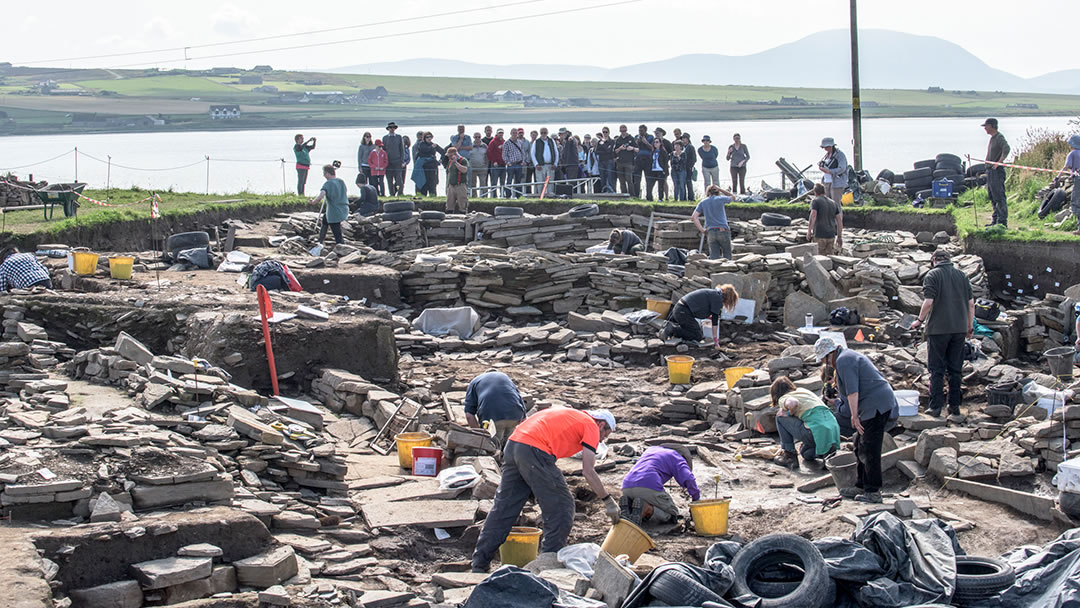
Q. It’s super to hear that the dig at the Ness of Brodgar has been so positive for people. Do you think it has also had an effect on Orkney as a whole?
NC: I think so. We have filmed television programmes with 25 companies from around the world. This includes the BBC, National Geographic, and other production companies from Japan, America, France and Germany.
We don’t do it for the 10 minutes of fame on TV – we do it for the site and for Orkney most importantly. The Ness provides free publicity for Orkney and paints the islands in a very positive light. This attracts a lot of visitors to Orkney!
We conducted a business study of the Ness several years ago, which showed that knock-on effect of the dig brings in excess of £1.6 million a year to the Orkney economy – this figure also does not include the funding for the actual excavation which is mainly raised outwith Orkney but spent here. That is the equivalent of 30 full time job salaries.
There is a misconception that the Ness receives huge sums of money from central government or other bodies, but in fact, the vast majority of our funding comes from public donations via our two charities, the Ness of Brodgar Trust and the American Friends of the Ness of Brodgar. We desperately hope that current public support continues on -site in 2023 and 2024 and into the future to the Trusts via our web-site www.nessofbrodgar.co.uk
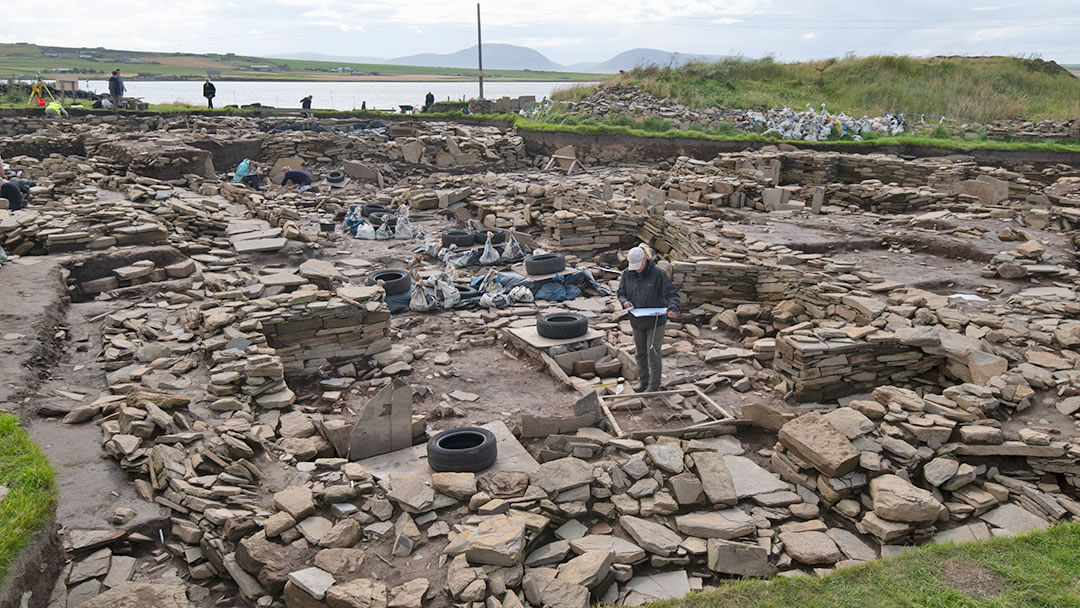
Q. Is there a concern when you close the site that it will have an effect on donations?
AM: We receive a lot of donations during the summer excavation season and not having that footfall after 2024 may be a problem. There is so much post-excavation work that needs to be completed, so we need to inform people about what we’re doing and find funding to support those all-important next stages. It’s not just about digging, it’s about all the rest of the enquiry we need to do and the records and artefacts, and all the other materials, we must make endure.
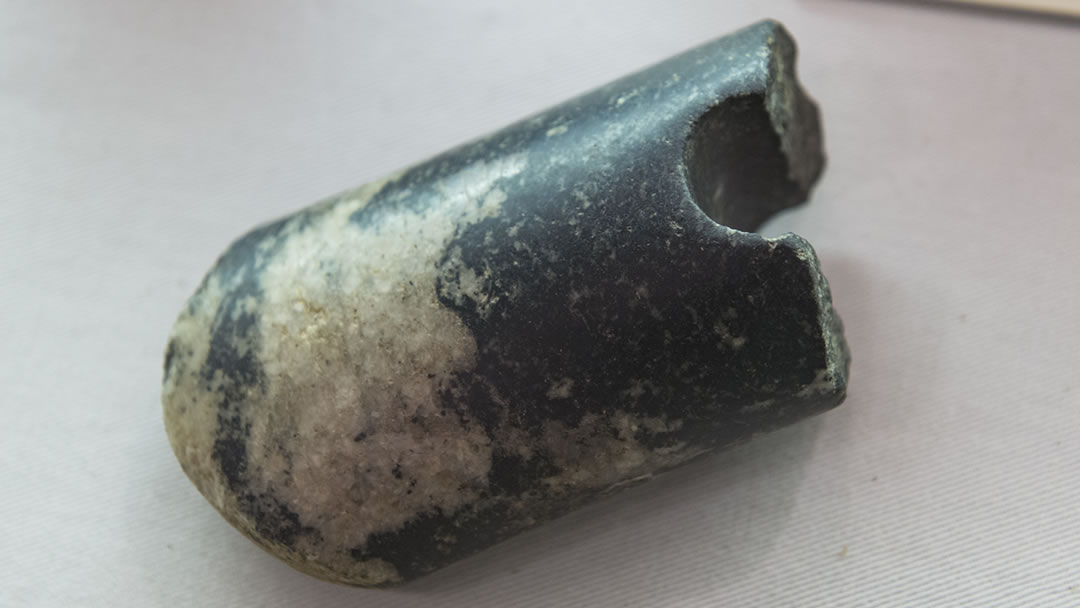
Q. What do you think are the most important lessons learned from dig at the Ness of Brodgar?
NC: We can look at lessons learned academically, the discoveries we have made about the Neolithic, and also about the way that excavations are conducted at a technical level. However there have also been lessons learned about what an archaeological site can do for the wider community.
Though the Ness as an annual event will be missed by many people, there are many more archaeological sites in Orkney.
Being able to combine all of those different elements into something we think has been a success is something we are very proud of. The legacy we are leaving is a lesson in itself.
AM: We have been very fortunate to gather a magic team around us who have been such a support and allowed us to expand the site into what it is today.
NC: It cannot be emphasized enough that without the support of the archaeologists, students, volunteers, the meet and greet team, Orkney Archaeology Society, UHI Archaeology Institute colleagues and the wider community, the site couldn’t operate as it does.
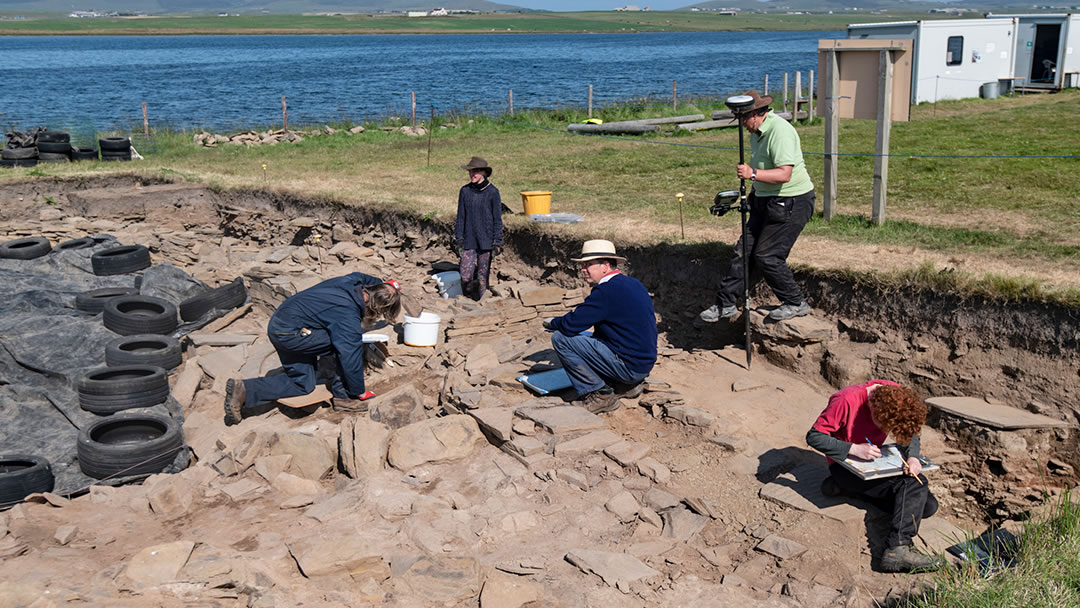
Q. What do you think the next exciting archaeological dig in Orkney will be?
NC: There are so many. I know that before I started working at Ness, I had a short list of other sites I would love to have excavated. Orkney is blessed with so much wonderful archaeology and there is endless potential for another major excavation site like the Ness of Brodgar – and not just from the Neolithic period.
AM: There is amazing work being done at the Cairns in South Ronaldsay, or at Skaill in Rousay.
NC: There’s Swandro in Rousay and Cata Sands in Sanday also.
AM: One of the great things the Ness of Brodgar has done has been to facilitate field schools with the UHI Archaeology Institute, to play a part in training future archaeologists. Archaeology degrees and research are not being undertaken at a distance but actually at university here, with students living in Orkney, impacting the island economy and being part of Orkney’s community – that’s really important.
For more information about the Ness of Brodgar, please visit www.nessofbrodgar.co.uk
Donations are always gratefully received and copies of the new Ness of Brodgar guidebook, ‘Time and Place’, can be bought in local bookshops and in the NorthLink Ferries on board shop.
 By Magnus Dixon
By Magnus DixonOrkney and Shetland enthusiast, family man, loves walks, likes animals, terrible at sports, dire taste in music, adores audiobooks and films, eats a little too much for his own good.

Pin it!